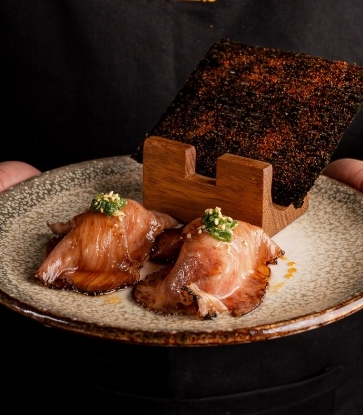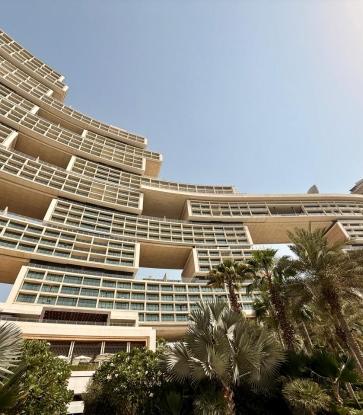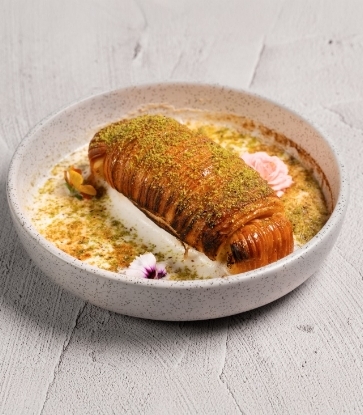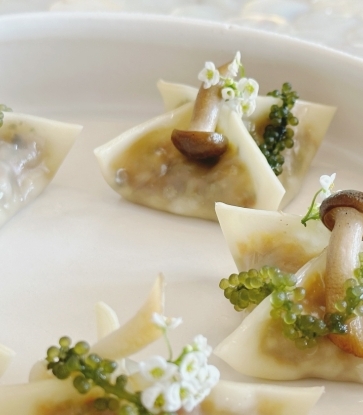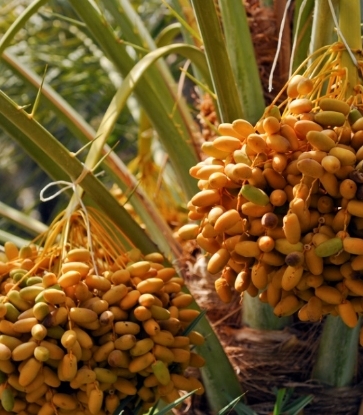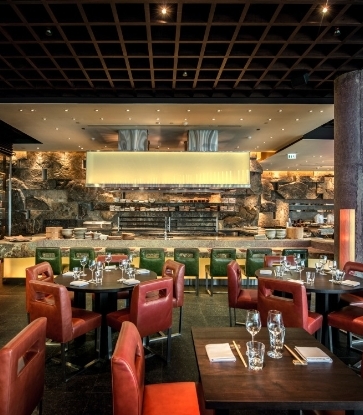Family recipes are at the core of Emirati cuisine. Passed down through generations by word of mouth, these recipes were considered as sacred family secrets until only recently. Since its establishment 50 years ago, the United Arab Emirates has seen one of the fastest developments across its economic and cultural sectors in history. While its cultural origin stems from Bedouins that have roamed the desert for centuries, the country has evolved significantly but have preserved its traditions and kept them alive, especially through their cuisine.
In the past, Emiratis have always dined in their home, surrounded by a range of family members, from parents to siblings, to second cousins and great aunts. Cooking and eating are perceived as group activities – making large and welcoming portions, regardless of occasion, with and for the ones you love. Their gastronomic heritage represents their way of life in a manner that puts family and hospitality at the forefront. Old family recipes have been taught across generations but, today, these recipes have found their way within the country’s ever-growing dining culture.
These days, we are seeing a rise in Emirati restaurants that are sharing generational food secrets with the public. One ingredient that plays a key role in the essence of Emirati dishes is a spice mix with a rich history known as Bezar, comprised of spices such as cumin, black pepper, cardamom, cinnamon, red pepper, turmeric and fenugreek.
In this article, we delve into the spice’s historic background, its presence across staple Emirati dishes and where you can taste them across the UAE.

Bezar Spice 101
The United Arab Emirates has been an essential stop for foreigner traders since the fifth century, thanks to its location across the spice and silk routes. With every stop, these multinational merchants brought with them flavours and aromas that have influenced the locals and their cuisine. Throughout staple dishes across Emirati cuisine, all those who eat it will be able to taste a blend of cuisines from India, Iran, Turkey, the Mediterranean and other parts of the Arab Gulf.The bezar spice mix is one of the main ingredients that originated from foreign influences. With similar flavour profiles to the ever-so popular Indian spice mix, garam masala, bezar is a fragrant mix of black pepper, cardamom, cinnamon, cumin, fenugreek, turmeric, coriander, star anise, chilli, fennel, garlic and, on occasion, dried mountain mushrooms from the coastal and mountainous Emirate, Fujairah.
This aromatic blend varies, however, throughout homes across the UAE – in essence, there is no “right way” to make the spice, but the efforts in making the spice are the same. The women of Emirati families are traditionally the heads of their kitchen and, for them, making food for their families is a sign of hospitality, which is a vital part within their community. The process of making the spice represents their culture’s hospitable and caring nature. Typically, they choose a ‘star’ spice and how much of each spice ingredient they want to use; in doing so, they create their unique flavour balance within the dishes they serve their families. To make the spice, they start by buying whole spices, washing them, and drying them under the sun until their rich fragrance became strong enough to smell from a distance. The dried whole spices are then roasted and grinded by pounding them all together to be stored in an airtight container to retain all the flavourful oils.
Versatility At Its Finest
Like many spices, bezar is added to dishes to create more depth of flavour. Its versatility spans various Emirati dishes, ranging from stews to rice dishes and even desserts. Even though recipes differ in local homes, the use of bezar is key to honouring their heritage. Let’s explore some of the dishes where the spice is used in a number of ways.Rice Dishes
Similar to Asian cuisines, spiced meats served with rice make up a large part of classic Emirati plates. An iconic dish is the Lamb Ghouzi – a slow cooked lamb served on bed of rice. Here, bezar is mixed within the lamb’s yogurt marinade, where it is left to marinate overnight and then cooked in a large pot over an open fire for almost two to three hours, resulting in tender and fragrant meal. In the case of Tahta – spiced chicken, shrimp or vegetables served under saffron rice – bezar is first cooked in a large skillet with vegetable oil to which the chicken, shrimp or vegetable is added to it, and once cooked, saffron rice is laid on top of it.
Where to try it: While the use of lamb in ghouzi is more common, alternative meats such as chicken can be the star of the dish. Either version in Dubai can be tasted in Bib Gourmand restaurant, Al Khayma Heritage Restaurant, or at the Middle Eastern MICHELIN-selected restaurant Siraj. As for tahta, authentic flavours paired with shrimp can be enjoyed in Abu Dhabi’s MICHELIN-selected, Emirati restaurant, Meylas.
Stews
Hearty stews are also at the heart of most Emirati staples where bezar is used frequently. For a dish like Margooga – a meat-based stew with cooked with bread dough and vegetables – bezar is used as a meat-rub and added to the vegetables when making the base of the dish. Another iconic Emirati dish where the bezar flavours are present is Machbous – a meat stew typically made with lamb and served with rice. The spice is added to the dish as additional seasoning once the lamb has been cooking in water for approximately 30 minutes, along with onions, bell pepper, garlic and other herbs and spices. Another popular stew is Saloona – a dish made with maleh (preserved fish) or other meats in a spicy tomato sauce and served with rice. The spicy Saloona sauce is where bezar makes its appearance in two different instances: in the dhen kheneen (clarified butter mixed with bezar spices) used to cook all the ingredients in the saucepan and as a seasoning.
Where to try it: MICHELIN-selected restaurant, Al Mrzab, is where one can enjoy the comforting flavours of chicken margooga and a variety of machbous dishes, ranging from chicken to king fish, in Abu Dhabi. While those visiting Dubai can taste these traditional dishes with different meats in MICHELIN-selected restaurant, Al Fanar. For those looking for try hearty stews with a little more heat, Al Fanar also offers diners the chance to taste spicy saloona. For a vegetarian option, MICHELIN-selected restaurant, Siraj, is the place to go to.

Desserts
Having spices in desserts is usually associated with cinnamon and cardamom, however, the bezar spice mix can be found in a few traditional desserts in Emirati cuisine. Mohalla, for example, is a sweet whole wheat crispy crepe eaten with butter mixed with bezar spice as a spread. While with a sweet Aseeda – a pudding made with either pumpkin, sweet potatoes or carrots and saffron – the taste of bezar is found in the dhen kheneen. Here, the dhen kheneen is added to the pudding mixture and used as a glaze once the pudding is cooked and ready to be served.
Where to try it: For those in Abu Dhabi with a sweet tooth and in the mood for the Emirati style crepes, MICHELIN-selected restaurant, Meylas, serves their mohalla with local honey, cheese and date syrup. As for sweet aseeda pudding, Abu Dhabi’s MICHELIN-selected restaurant, Al Mrzab makes it version as an aseeda bobbar meaning a pumpkin pudding. While those looking for a different flavour, MICHELIN-selected restaurant, Al Fanar has their version of aseeda al tamor, which is made with dates.
Illustration Image // Kanashkin/iStock





